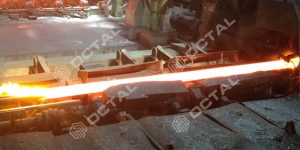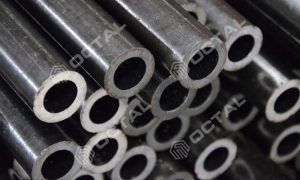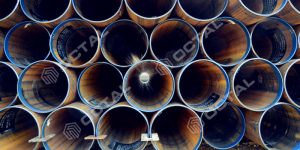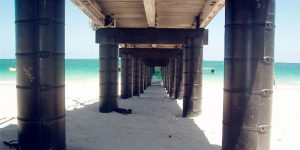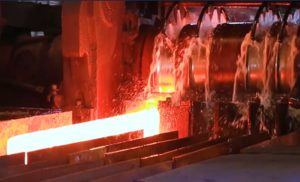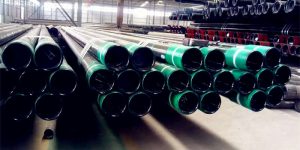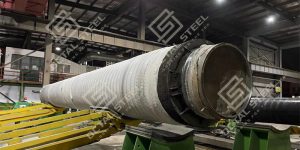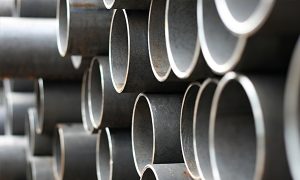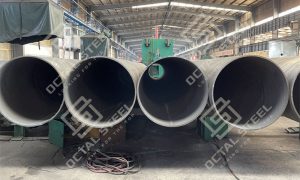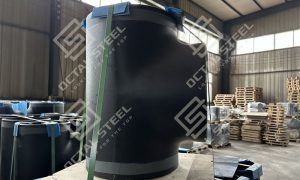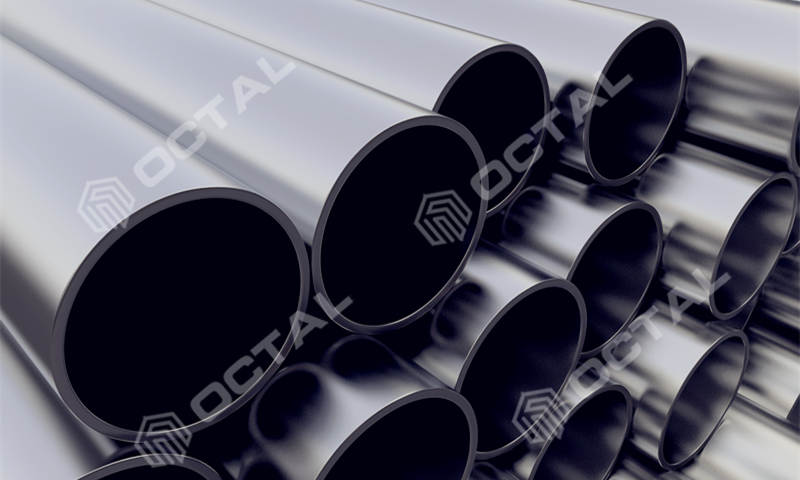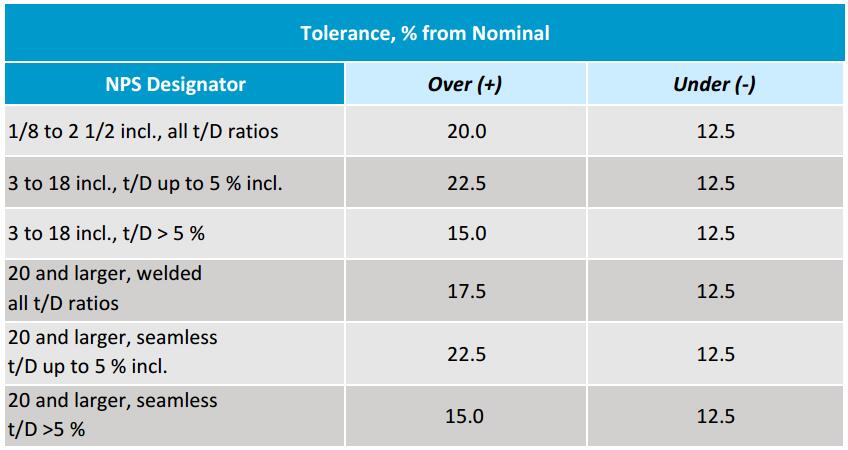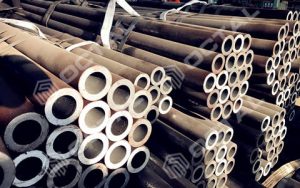ASTM A312 Stainless Steel Pipe
Standard: ASTM A312, ASME SA312
Common Use Grades: TP304, 304L, 316, 316L
Diameters: From 1/8 inch to 30 inch.
Wall thickness: SCH 10S, 40S, 80S
Length: 20ft, 40ft, Single Random Length, Double Random Length and Customized
Octal supplies ASTM A312 TP304/304L, TP316/316L Stainless Steel Pipe in Welded and Seamless.
ASTM A312 pipe is the general use stainless steel pipe applied in different industries. It covers diameters from 1/8” to 30” and thickness from SCH 10S to SCH 80S. Common use material grades are TP304/304L, TP316/316L.
ASTM A312 / ASME SA312 Standard Scope
The standard specifications include seamless, straight seam welded and heavily cold welded austenitic stainless steel tubing for high temperature and general corrosive service. There are several grades in this standard, and each steel grade shall confirm to the required chemical composition of C, Mn, P, S, Si, Cr and Cr, Ni, Mo, etc. All the pipes shall be furnished in the heat-treated condition in accordance with the required heat treating temperature and cooling/testing requirements. And also need to comply to the required tensile strength and yield strength.
Chemical Composition for TP304 and TP316
A: New designation established in accordance with Practice E527 and SAE J1086
Mechanical Properties
A312 Pipe Manufacturing Types
ASTM A312 pipe covers following manufacturing types (Including hot finished or cold finished):
a. Seamless Pipe (SMLS): It covers stainless steel seamless pipe that manufactured in any process that can not be involved in the welding process.
b. Welded Pipe (WLD): It covers welded pipe that manufactured by an automatic welding process that does not add filler metal during welding.
c. Cold Worked Pipe (HCW pipe): The heavy cold-worked pipe that apply cold working of not less than 35% reduction in thickness of both wall, and welded to the welded pipe prior to final annealing. Do not use fillers during welding.
d. Welded and HCW pipe: Welded pipe and HCW pipe of 14 and smaller than NPS 14 shall have a single longitudinal weld. After approval by the purchaser, the welded pipe and HCW pipe with an NPS greater than NPS 14 shall have a single longitudinal weld or shall be manufactured by forming and welding two longitudinal sections of flat stock. So each welds are to be tested, inspected, inspected or treated.
ASTM A312 pipe shall be free from oxide scale and contaminated iron filings. If the steel pipe is brightly annealed, and pickling, blasting or surface finishing may not be mandatory. The purchaser can request that the finished pipe shall do passivating treatment.
Heat Treatment Methods
ASTM A312 stainless steel pipes shall be furnished in heat treatment condition comply to table 2 of ASTM A312. In case of seamless types, immediately following hot forming while the temperature of the pipes is not less than the minimum solution treatment temperature specified in this table, pipes shall be individually quenched in water or rapidly cooled by other means (direct quenched).
B: Minimum, unless otherwise stated
C: Quenched in water or rapidly cooled by other means, at a rate sufficient to prevent reprecipitation of carbides, as demonstrable by the capability of pipes. heat treated by either separate solution annealing or by direct quenching, of passing Practices A262, Practice E. The manufacturer is not required to run the test unless it is specified on the purchase order (see Supplementary Requirement S7). Note that Practices A262 requires the test to be performed on sensitized specimens in the low-carbon and stabilized types and on specimens representative of the as-shipped condition for other types. In the case of low-carbon types containing 3% or more molybdenum, the applicability of the sensitizing treatment prior to testing shall be a matter for negotiation between the seller and the purchaser.
Mechanical Test
Mechanical test including heat treated condition, Transverse or Longitudinal Tension Test or Flatten Test.
Transverse or Longitudinal Tension Test
For lots of not more than 100 pipes, one specimen shall be taken for tensile testing. For lots of more than 100 pipes, two specimens shall be taken from two pipes for tensile testing.
Flatten Test
For material heat treated in batch furnace, (by quenching after hot forming or in a batch-type furnace equipped with recording pyrometers and automatically controlled within a 30℃ or less range) 5% of steel pipe should be taken from each heat treated lot for flattening test.
For material heat treated in the continuous furnace, sufficient number of pipe to constitute 5% of the lot, but in any case not less than 2 lengths for flattering test.
ASTM A312 Pipe Size Tolerances
ASTM A312 defines permitted variations for the pipe wall thickness and length as below:
Permitted Tolerance in Wall Thickness
Where:
t = Nominal Wall Thickness
D = Ordered Outside Diameter
Length Variations
The length of pipe should be as follows:
a. Unless otherwise specified, all size from NPS 1/8 to NPS 8 are available in a maximum length of 24 ft. And a length range from 15 to 24 ft. Short length are acceptable, but the number and minimum length are agreed upon by the purchaser and the manufacturer.
b. If a certain cut length is required, the required length should be specified in the order. The pipe shall not be longer than the specified length and the pipe length shall not exceed 1/4 inch [6 mm].
c. Unless otherwise specified, Joints are not allowed to have .
ASTM A312 TP304 Stainless Steel Pipe – Common Grade Material of A312 Pipe
ASTM A312 TP 304 / 304L stainless steel pipe is the most versatile and most commonly used stainless steel on the market. And these grades are austenitic chromium alloy, also known as “18/8” stainless steel, because the composition of the steel is 18% chromium and 8% nickel.
Characteristics
The chromium content promotes considerable resistance to corrosion and oxidation. Stainless steel alloys are resistant to most oxidizing acids, and can withstand normal rust, but this does not mean that steel does not discolor over time. Steel requires cold working to produce higher tensile strength. For severely welded stainless steel parts, post weld annealing may be required to provide maximum corrosion resistance.
Type 304 stainless steel pipe has excellent welding and deep drawing properties. It is easy to manufacture and clean.
304 Stainless Steel Pipe Applications
Type 304/ 304L stainless steel is very common throughout the industry, especially in food processing, because it is not susceptible to acid corrosion in common foods. Therefore, this steel is very suitable for use in sinks, work surface, preparation areas and refrigerators. It is also an ideal material for pharmaceutical industry, such as clean room.
ASTM A312 TP316 Stainless Steel Pipe – Common Premium Grade of A312 Pipe
Type 316/ 316L are austenitic stainless steel with the molybdenum added. Compared with type 304/ 304L stainless steel, molybdenum has better overall corrosion resistance, especially for pitting and crevice corrosion in chloride environments. Type 316/ 316L stainless steel can provide excellent toughness and mechanical properties at sub-zero temperatures.
Type 316/ 316L stainless steel product is suitable for cold rolling, continuous mill plate and plate millplate form, thickness range up to 60 inch.
316 Stainless Pipe Feature
Type 316/ 316L stainless steel pipe are intended for use in applications that require high strength, toughness and workability, as well as enhanced corrosion resistance. Compare to 304 stainless steel, the alloy contains a higher percentage of molybdenum and nickel, which improves corrosion resistance. So it can be an ideal material for application in harsh environments. Type316L Stainless steel has a higher carbon content than Type 316, so as to reduce its weldability.
316 Stainless Steel Pipe Applications
Type 316/316L seamless pipe is used for liquid or gas pressure transfer in water treatment, waste water treatment, petrochemical, chemical, pharmaceutical and other industries. And structural applications include handrails, poles and support pipe for salt water and corrosive environments. Compared with type 304 stainless steel, type 316 stainless steel pipe has lower weldability, therefore it is not used as often as welded pipe unless its superior corrosion resistance exceeds weldability.
Octal provides ASTM A312 Stainless Steel Pipe in Grade TP304 and TP316 pipe in stock for urgent delivery and fresh new, we welcome you to contact us for a quick offer.


